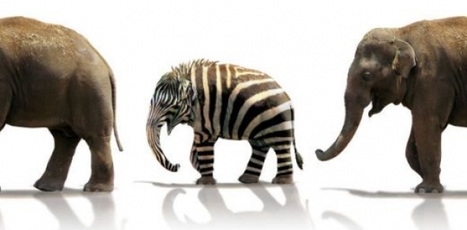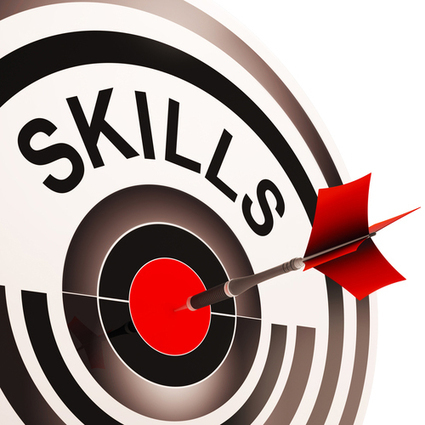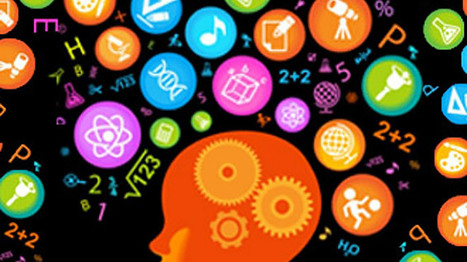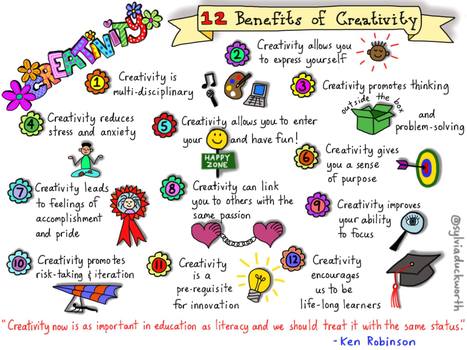 Your new post is loading...

|
Rescooped by
Jim Lerman
from :: The 4th Era ::
February 1, 2016 9:24 AM
|
The theme of this year’s WEF was what Klaus Schwab calls The Fourth Industrial Revolution a period of deeply transformative change, which Schwab believes we are merely at the beginning of. The three revolutions which preceded the current one were the first industrial revolution which occurred between 1760 and 1840 and brought us the stream engine and railroads. The second industrial revolution in the late 19th and early 20th centuries brought us mass production and electricity. The third computer or digital revolution brought us mail.frames, personal computers, the Internet and mobile technologies and began in the 1960s.
The fourth revolution whose beginning all of us are lucky enough to see includes artificial intelligence and machine learning, the “Internet of things” and it’s ubiquitous sensors, along with big data. In addition to these technologies that grow directly out of Moore’s Law, the Fourth Industrial Revolution includes rapid advances in the biological sciences that portend everything from enormous gains in human longevity to “designer babies”. Here too we find our rapidly increasing knowledge of the human brain, the new neuroscience, that will likely upend not only our treatment of mental and neurodegenerative diseases such as alzheimer’s but include areas from criminal justice to advertising
Jim Lerman's insight: I just recently discovered Searle's blog and very much appreciate his perspectives.

|
Rescooped by
Jim Lerman
from :: The 4th Era ::
February 1, 2016 1:56 AM
|
"Jobs are soon going to be automated away faster than we can create them.
"A prime example of this is driving jobs. Over 2.8% of jobs in the U.S. are as some kind of driver — e.g. truck, bus, or taxi. While this percentage may not sound like a lot, we’re talking about over 4 million people possibly being displaced in the U.S. alone. [1][2] You know all those Uber drivers who are upset about rate cuts? Just wait until autonomous vehicles take over.
"Autonomous vehicles may seem far off, but they’re just around the corner. Elon estimates that Teslas will be fully autonomous in late 2018 and that legislation will allow them to drive without a human only 1–3 years after that. Driving on the freeway is the easiest thing to automate and truck drivers happen to make up for 77.6% of those 4 million driving jobs. Autonomously driven tractor-trailers (those big trucks on the highway that are driven by 1.8 million people) are already being tested on public highways as of May 2015. [1]"

|
Rescooped by
Jim Lerman
from :: The 4th Era ::
February 1, 2016 1:49 AM
|
I’ve had many relationships with my creativity, some healthy, some adverse and a few rare negligent patches. We’ve been on the road together long enough that I’ve seen what happens when I feed it and what I lose when I starve it (mainly, my judgment, sanity and ability to be polite to people who do careless things).
All of my work, professional and personal, design and writing, follows this rough shape:

|
Rescooped by
Jim Lerman
from :: The 4th Era ::
February 1, 2016 1:48 AM
|
The Need for 21st Century Skills
"The world has changed dramatically, decisively, and permanently and the things that employers are looking for in their ideal employees have changed with it. These changes are necessitated by fundamental societal shifts in the way the world works in the Information Age. The University of Melbourne proposes the following breakdown for considering what the essential competencies are for a student in the Information Age: - Ways of thinking. Creativity, critical thinking, problem-solving, decision-making and learning
- Ways of working. Communication and collaboration
- Tools for working. Information and communications technology (ICT) and information literacy
- Skills for living in the world. Citizenship, life and career, and personal and social responsibility"
Jim Lerman's insight: An interesting take on 21st Century Skills from Australia. Similarities to and differences from the U.S. version are interesting.

|
Scooped by
Jim Lerman
February 1, 2016 1:44 AM
|
"Having ideas is not the same thing as being creative. Creation is execution, not inspiration. Many people have ideas; few take the steps to make the thing they imagine."

|
Scooped by
Jim Lerman
January 31, 2016 4:23 AM
|
"Sometimes thinking creatively about an idea, a project or a problem comes easily. Other times it can be tricky, and we get stuck looking at the issues without seeing anything new. At times like these, turn to your smartphone: Many different apps can help in the creative thinking process."

|
Scooped by
Jim Lerman
January 31, 2016 4:04 AM
|
In the midst of the often-frenetic whirlwind of daily life, parents may have difficulty reinforcing the supports that are most important if children are going to develop their intelligence and build upon their creative thinking skills. What, in fact, requires immediate attention?
Here are three essential but straightforward goals that kids can strive toward, along with quotes that families can ponder together, and practical strategies for parents so that they can help kids thrive.
|

|
Rescooped by
Jim Lerman
from :: The 4th Era ::
February 1, 2016 9:20 AM
|
Videos of all the sessions from the WEF, held Jan. 20-23, 2016 in Davos, Switzerland. A great place to start for anyone wishing to identify current intellectual trends among the elite elite.

|
Rescooped by
Jim Lerman
from :: The 4th Era ::
February 1, 2016 1:49 AM
|

|
Rescooped by
Jim Lerman
from :: The 4th Era ::
February 1, 2016 1:48 AM
|
Tina Seelig, author of Insight Out: Get Ideas Out of Your Head And Into the World, has been teaching classes on creativity and innovation at Stanford University School of Engineering for 16 years, and she says most people don’t have a clear understanding of what those things really are.
"Imagination is envisioning things that don’t exist," says Seelig. "Creativity is applying imagination to address a challenge. Innovation is applying creativity to generate unique solutions. And entrepreneurship is applying innovations, scaling the ideas, by inspiring others’ imagination."
Once you understand this framework, you can put it into action, she says, and the way to innovate is to look at situations from a fresh perspective.

|
Rescooped by
Jim Lerman
from :: The 4th Era ::
February 1, 2016 1:47 AM
|
Austin-based author and artist Sunni Brown makes sense of problems through her dual talents: writing and doodling. She runs consulting firm Sunni Brown Ink, where she helps businesses solve problems using a visual mapping system she calls infodoodling. She's written two books about unlocking creativity, Gamestorming (2010) and The Doodle Revolution (2015), and has just begun working on a third.
But before she helps others unlock their creative potential, she has to channel some inspiration for herself. Here's how she does it:
Via Jim Lerman

|
Scooped by
Jim Lerman
January 31, 2016 4:57 PM
|

|
Scooped by
Jim Lerman
January 31, 2016 4:06 AM
|
Chapter 1 of my new book, Domain Specificity of Creativity, introduces the issue of domain specificity and argues that although people generally think of creativity in a domain-general way, our intuitions, when guided by the right questions, actually suggest a much more domain-specific view.
The goal of this chapter is not to convince the reader that domain specificity is the correct theory but simply to introduce the controversy, break down some seemingly commonsensical (but incorrect) biases in the ways we tend to think about creativity, and introduce the kinds of tools needed to make reasonable judgments about how domain specific creativity really is.
Chapter 1’s introduction prepares the groundwork for the more in-depth explorations that make up the rest of the book. Why not read it (for free) to see if this book might interest you?
|



 Your new post is loading...
Your new post is loading...




















